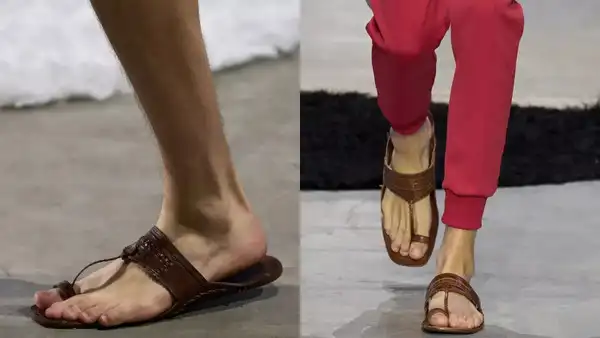So, here’s what went down: Prada recently showcased its Spring-Summer 2026 men’s collection, and one particular piece had Indian fashion watchers doing a double take, sandals that looked way too familiar. Yep, they strongly resembled Kolhapuri chappals, the iconic handmade leather footwear from Maharashtra. But instead of owning up to the source of inspiration, Prada casually referred to them as just “leather sandals” in their show notes. Naturally, this didn’t sit well with a lot of people.

Lalit Gandhi, the president of the Maharashtra Chamber of Commerce, Industry and Agriculture, was among the first to call the brand out. He reminded them and the world that Kolhapuris aren’t just any old sandals. They carry cultural and artisanal weight and even have a GI (Geographical Indication) tag since 2019.Fast forward a few days and Prada seems to have gotten the message. Lorenzo Bertelli, who heads CSR at the Prada Group, sent a letter to Gandhi acknowledging the “inspiration” behind the sandals. He admitted that the design was indeed influenced by traditional Indian handcrafted footwear, which has, as he put it, “a centuries-old heritage.” (Took them long enough, right?)Bertelli also clarified that the collection is still in its early design phase and hasn’t gone into production or sale, yet. He added that Prada respects Indian craftsmanship and wants to explore ways to work more closely with local artisans in the future.While it’s good that Prada finally acknowledged the roots of the design, Gandhi’s larger point still stands: cultural exchange in fashion is great, but it has to come with proper credit and collaboration. It’s not enough to just “borrow” it’s about recognizing where things come from and supporting the people who’ve kept those traditions alive.If this leads to big brands actually uplifting traditional crafts instead of just repackaging them, it might be a step in the right direction for the fashion industry.

